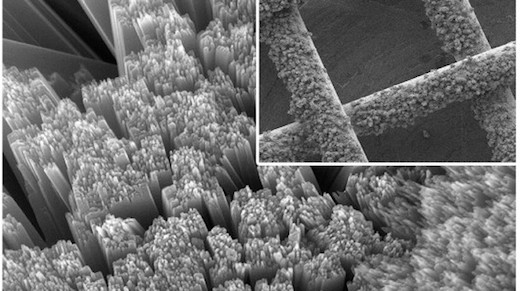
A team of researchers at the Ohio State University (OSU) successfully produced a dye-sensitized solar cell, which can store power by using air to decompose and re-form lithium peroxide. This device combines a solar cell and battery into one, and it is the first device of its kind. The adoption of this technology could also considerably lower the costs of solar cells.
The design they came up with utilizes only three electrodes, whereas the standard practice until now has been to use four. At the bottom of the electrodes there is a lithium plate, followed by a layer of electrolyte, a thin sheet of porous carbon and finally another layer of electrolyte. At the tip of the electrode, there is a permeable titanium gauze mesh, which contains a dye-sensitive titanium dioxide photoelectrode. The latter generates trioxide ions when illuminated and these then travel to the oxygen electrode surface via an iodide “shuttle.” Once there they oxidize into lithium peroxide.
The electrons in the battery then chemically decompose the lithium peroxide into lithium ions and oxygen, with the latter being released into the air. The lithium ions, on the other hand, are stored as lithium metal. During the discharging process, the battery draws oxygen from the surrounding environment and uses it to re-form lithium peroxide.
The titanium gauze mesh is coated with a red dye (a ruthenium compound), which assists in tuning the wavelength of the captured light. This dye is also capable of absorbing light and releases electrons, which creates an electric current in the process of new electrons being drawn from the iodide solution to replace them. However, this dye that they are using is depleted after only eight hours of charging and discharging, which is much too quickly for serious consideration in designing and building a cost-effective, rechargeable solar cell.
The scientists are currently testing hematite (rust) as a replacement for the dye-sensitized titanium oxide, which they hope will prove to have a much longer lifespan. If they succeed in making this device as efficient as currently used solar cells, it could prove a remarkable breakthrough in the renewable energy field. The research is being funded by the US Department of Energy.
Related Articles on JetsonGreen.com:
MIT Researchers Develop A More Efficient Battery
More Environmentally Friendly Solar Cells
Stacking Solar Cells Could Vastly Improve Their Efficiency

Leave a Reply
You must be logged in to post a comment.